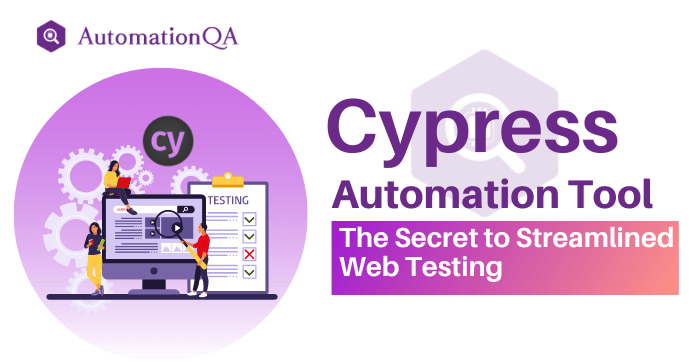
Do you need help automating web testing cases? Indeed, web testing is itself e a complex process, requiring a solid understanding of web development technologies, automation frameworks, and testing best practices. However, today’s software testers have a Cypress automation tool capable of simplifying the process with automation.
Cypress makes web testing more accessible to testers of all levels, helping eliminate various testing challenges professionals might face! However, software testers should know the best practices for test automation with Cypress. This article outlines multiple web testing scenarios and the corresponding best practices for professionals to follow!
Cypress – the Swiss Army knife of automation tools, offering unparalleled speed and accuracy.
Organizing Tests by Logging In and Controlling State
Often, software testers share web page objects, using the UI to log in instead of taking shortcuts.
Best Practice: When writing tests, it is essential to have a well-organized Cypress testing framework suite. Keep the tests in separate folders and subfolders based on functionality or priority. It helps to locate and run specific tests whenever needed.
Plus, you should programmatically log into your application to take control of its state. Use “cy.request()” to send HTTP requests to the backend APIs and test challenging UI scenarios. Additionally, use the “cy.login()” and “cy.logout()” commands as shortcuts to log in and out during testing.
Selecting Elements
Don’t use highly brittle selectors, as they tend to change frequently.
Best Practice: Use the built-in selectors of Cypress testing automation tool to select elements on a web page. Use the “cy.get()” and “cy.contains()” commands to select elements by XPath, CSS selector, or text content. Avoid using absolute XPath expressions, as these are prone to breakage.
If you’re looking for more resources to find a suitable approach for testing your components, use the Cypress Testing Library package and select elements based on the requirements.
Assigning Return Values
A common mistake most testers make is that they try to assign the return values with let, const, or var.
Best Practice: Cypress allows you to assign return values to variables. You can use these variables in subsequent tests. Use the cy.wrap() command to assign a value to a variable. Use the cy.get() command to retrieve the value in a subsequent test.
Using Cypress Automation Tool To Visit External Sites
Executing test cases without error is impossible when visiting or interacting with external sites or servers. So what’s the solution, then?
Best Practice: When writing tests that involve external sites, you can use cy.request() to send HTTP requests via APIs to those sites. This can help you test scenarios that involve interactions with external APIs. Additionally, cache your results via cy.session() command. Another solution is to use cy.visit() command to visit external sites directly.
Having Tests Rely on Previous Tests’ State
Coupling multiple tests altogether makes the testing process complex.
Best Practice: Cypress tool for testing provides a solution so that multiple tests can run simultaneously and independently from one another. You can combine all tests in one test or run shared code before each test run. Alternatively, in subsequent tests, you can use the cy.wrap() and cy.get() commands to return values through variables.
Creating Smaller Tests with Single Assertions
Writing smaller tests doesn’t mean writing unit tests.
Best Practice: Smaller tests focus on a single functionality or testing scenario. So each test run should have a single assertion that verifies a specific outcome. You can also add multiple assertions using the Cypress automation tool cy.should() command to make assertions on the applications’ state.
Using after/afterEach Hook and Avoid Unnecessary Waiting
Using after/afterEach hook should not be used to clean up the state. Also, using cy.wait() command makes waiting for arbitrary periods pretty long.
Best Practice: After running all tests, the software testers should use the after and afterEach hooks. It’s perfect for performing cleanup tasks, resetting the application’s state, and logging test results. Additionally, use cy.wait() command sparingly so that the wait time is not too long!
Using Global baseUrl with Web Servers
When software testers try to start a web server from within Cypress, they face process errors. Also, it’s a common scenario to forget to set a base URL.
Best Practice: Before using the Cypress tool for automation, testers should open the web server. Thus you can test in an environment like the production environment. Additionally, use Cypress.config() command to set the global baseUrl for all your tests. Use the cy.server() and cy.route() commands to simulate server responses.
Leveraging Cypress in the Best Way Possible
Cypress is a great tool for web testing automation and writing tests faster that are more reliable and maintainable. Software testers can improve the web testing process by following the above-mentioned best practices. Overall, Cypress automation tool is a great tool for automating web testing because:
- It offers intuitive APIs.
- It has built-in features like automatic waiting, time-travel debugging, etc.
- It has a powerful test runner engine.
- It can run tests in parallel and perform regression testing.
- It supports a wide range of web browsers.
- It is easy to separate test and production code to debug issues faster.
- Let Cypress automate your web tests and say goodbye to test worries!
